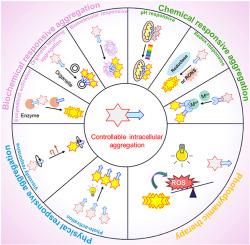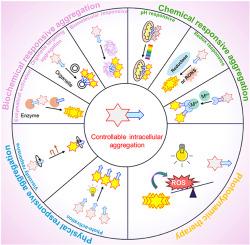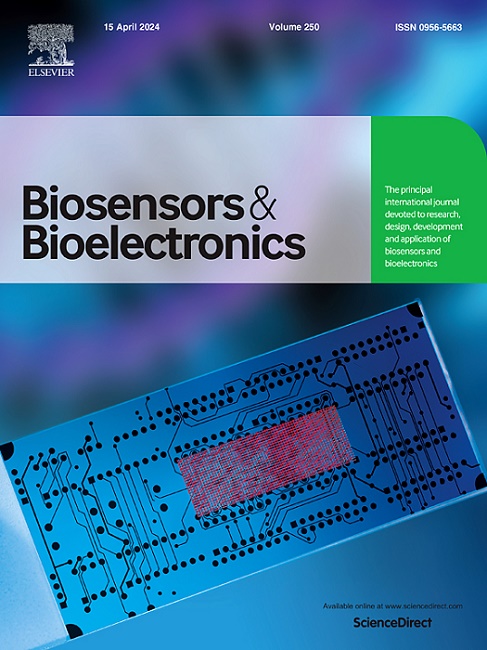细胞内可操控的聚合诱导发光发光剂
IF 10.7
1区 生物学
Q1 BIOPHYSICS
引用次数: 0
摘要
随着光学成像技术的发展,生物光子学取得了重大进展,促进了对生物相关物种的无创检测。聚合诱导发光(AIE)材料是一类新型发光剂,在聚合状态下发光或光动力效率增强,是生物医学应用的理想材料。聚合诱导发射光源(AIEgens)的细胞内可控聚合可实现细胞内靶标的高分辨率成像和相关疾病的诊断,利用聚合体的新特性还可进行疾病治疗。本综述深入分析了调节 AIEgens 聚集的策略,重点关注分子修饰对提高亲水性和精确控制 AIEgens 细胞间聚集的重要性。此外,我们还综述了 AIEgens 在生物成像中的代表性应用,如酶活性监测、蛋白质追踪、细胞器功能监测和体内肿瘤特异性治疗。此外,我们还概述了 AIE 研究面临的挑战和未来的机遇,强调了实现 AIEgens 在细胞内精确可控聚集的策略的重要性,以及扩展 AIEgens 吸收和发射波长的必要性。本综述旨在阐明如何为先进的生物医学应用合理开发多模态 AIEgens。本文章由计算机程序翻译,如有差异,请以英文原文为准。


Intracellularly manipulable aggregation of the aggregation-induced emission luminogens
Biophotonics has seen significant advancements with the development of optical imaging techniques facilitating the noninvasive detection of biologically relevant species. Aggregation-induced emission (AIE) materials have emerged as a novel class of luminogens exhibiting enhanced luminescence or photodynamic efficiency in the aggregated state, making them ideal for biomedical applications. The intracellularly controlled aggregation of aggregate-induced emission luminogens (AIEgens) enables high-resolution imaging of intracellular targets and diagnosis of related diseases, and enables disease therapy by exploiting the novel properties of aggregates. This review provides an in-depth analysis of the strategies employed to modulate the aggregation of AIEgens, focusing on the importance of molecular modifications to improve hydrophilicity and achieve precise control over the intercellular aggregation of AIEgens. Furthermore, the representative applications of AIEgens in bioimaging, such as enzyme activity monitoring, protein tracking, organelle function monitoring, and in vivo tumor-specific therapeutics, are reviewed. Additionally, we outline the challenges and future opportunities for AIE research, emphasizing the importance of the strategies for realizing the precisely controllable aggregation of AIEgens inside cells and the need for extending AIEgens’ absorption and emission wavelengths. This review aims to elucidate the rational development of responsive AIEgens for advanced biomedical applications.
求助全文
通过发布文献求助,成功后即可免费获取论文全文。
去求助
来源期刊

Biosensors and Bioelectronics
工程技术-电化学
CiteScore
20.80
自引率
7.10%
发文量
1006
审稿时长
29 days
期刊介绍:
Biosensors & Bioelectronics, along with its open access companion journal Biosensors & Bioelectronics: X, is the leading international publication in the field of biosensors and bioelectronics. It covers research, design, development, and application of biosensors, which are analytical devices incorporating biological materials with physicochemical transducers. These devices, including sensors, DNA chips, electronic noses, and lab-on-a-chip, produce digital signals proportional to specific analytes. Examples include immunosensors and enzyme-based biosensors, applied in various fields such as medicine, environmental monitoring, and food industry. The journal also focuses on molecular and supramolecular structures for enhancing device performance.
 求助内容:
求助内容: 应助结果提醒方式:
应助结果提醒方式:


